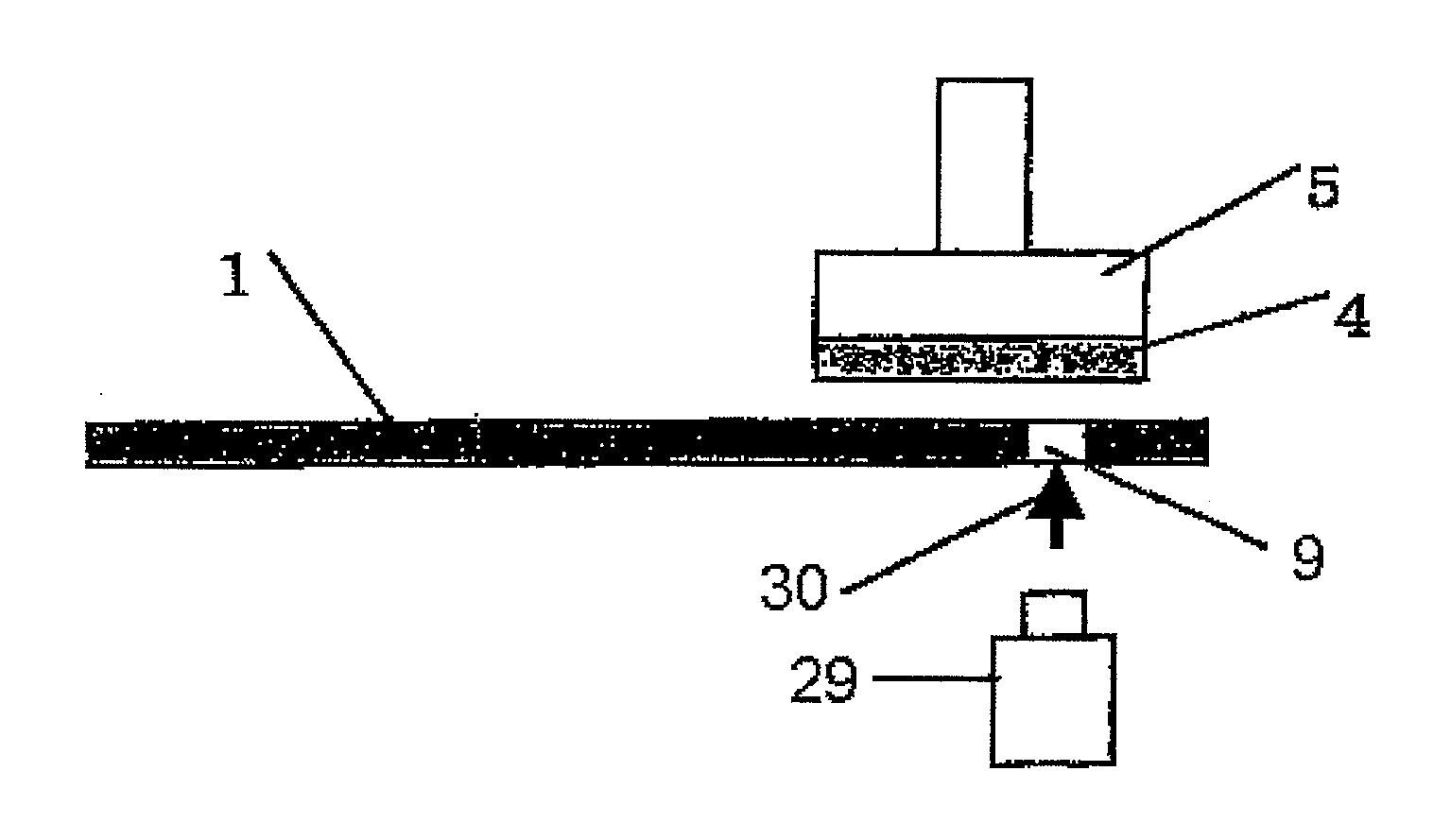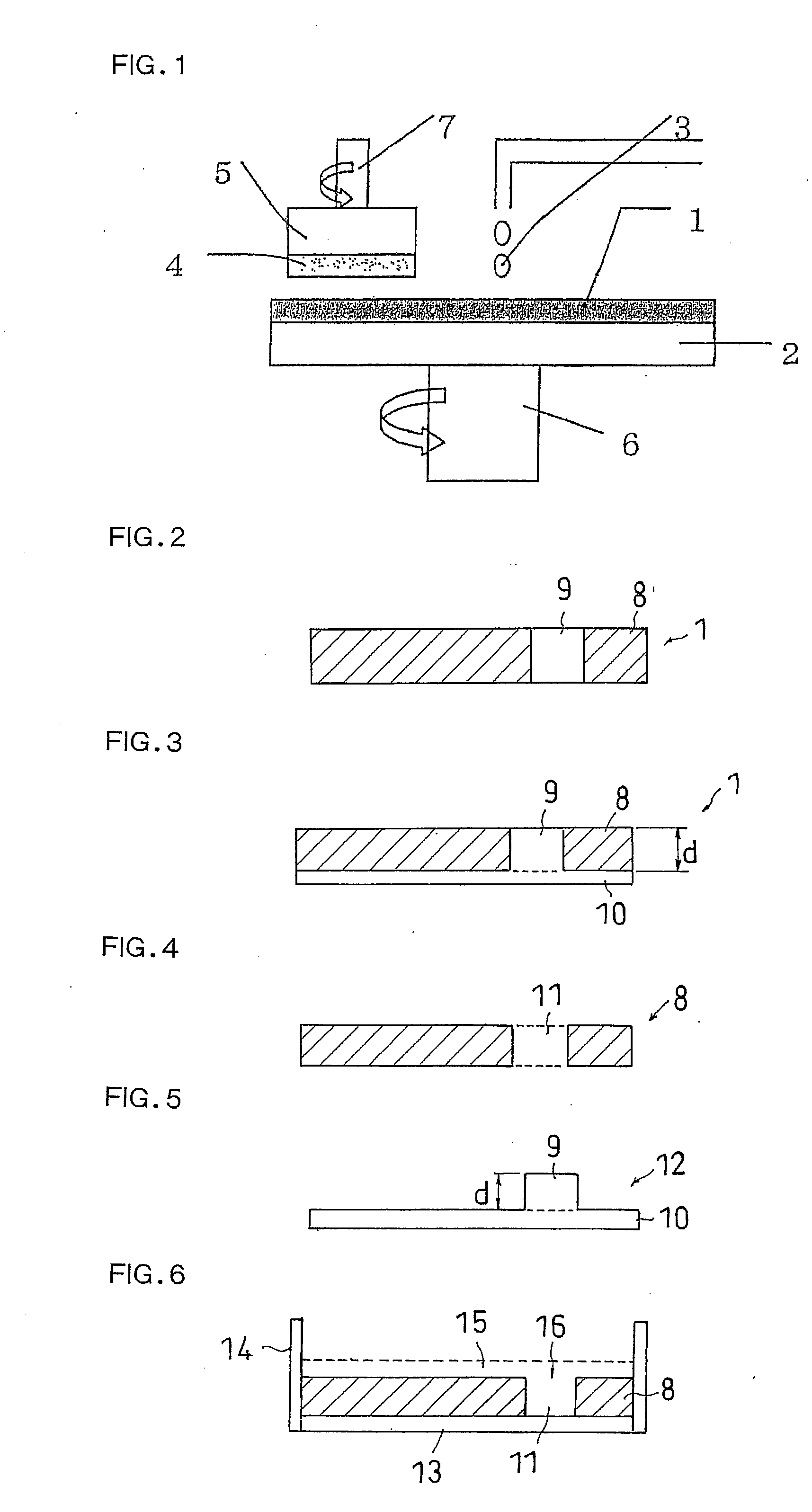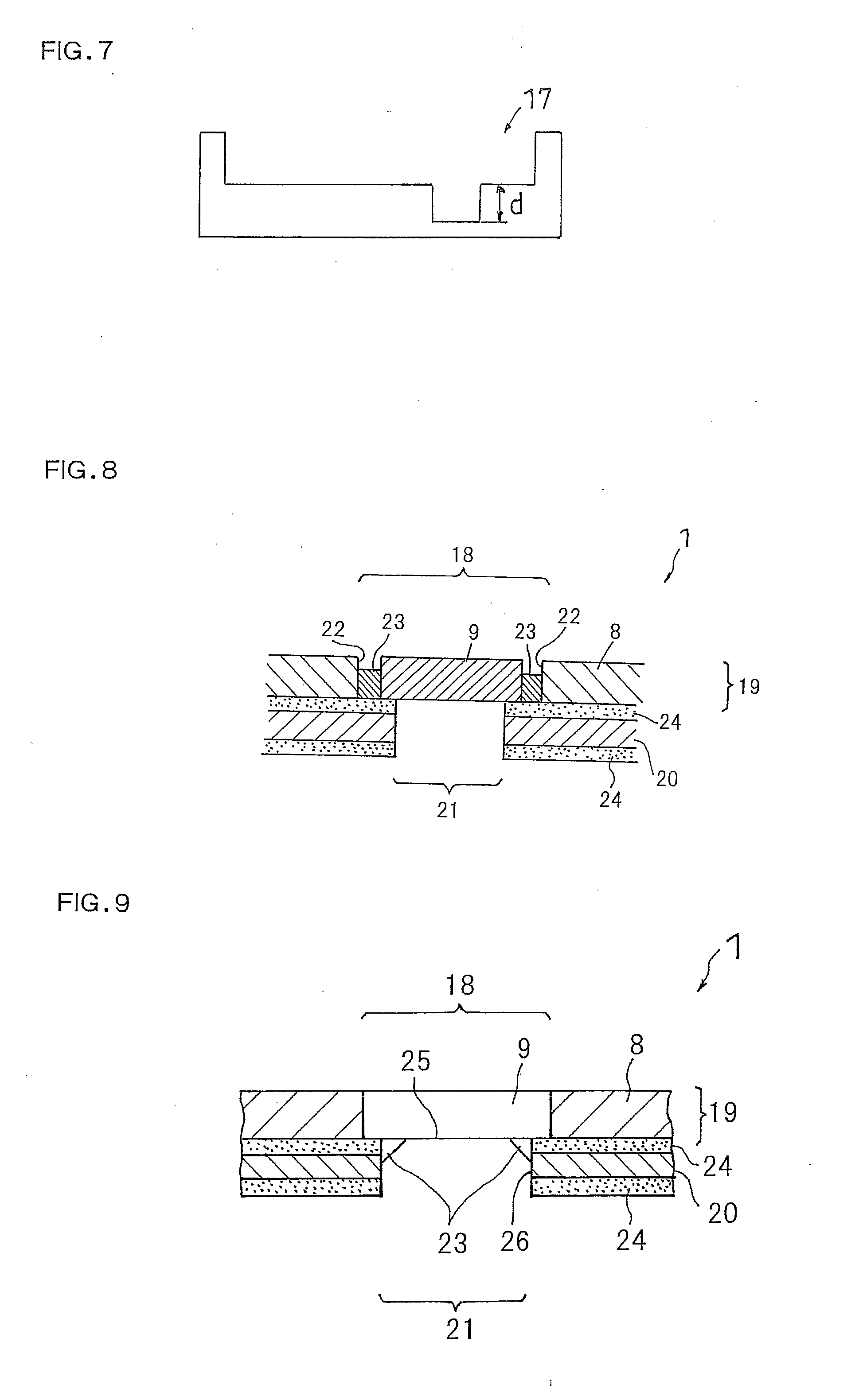Polishing pad
a technology of polishing pad and slurry, which is applied in the field of polishing pad, can solve the problems of reducing the detection precision of an endpoint or disabling detection, and achieve the effects of suppressing the deterioration of polishing characteristics, high-precision optical detection, and preventing slurry leakag
- Summary
- Abstract
- Description
- Claims
- Application Information
AI Technical Summary
Benefits of technology
Problems solved by technology
Method used
Image
Examples
example 6
[0300]A polishing pad was manufactured by means of a similar method to that in Example 2 with the exception that, in Example 2, 80 parts by wt of liquid urethane acrylate (Actilane 290, manufactured by Aczo Nobeles Co.), 20 parts by wt of liquid urethane acrylate (UA-101H, manufactured by Kyoeisha Chemical Co., Ltd.) were used instead of 100 parts by wt of liquid urethane acrylate (Actilane 290, manufactured by AKCROS CHEMICALS CO.). A light-transmitting region has physical properties of an Asker hardness A of 87 degrees, a compressibility of 1.3% and a compression recovery percentage of 94.3%.
example 7
[0301]A polishing pad was manufactured by means of a similar method to that in Example 3 with the exception that, in Example 3, 80 parts by wt of liquid urethane acrylate (Actilane 290, manufactured by Aczo Nobeles Co.), 20 parts by wt of liquid urethane acrylate (UA-101H, manufactured by Kyoeisha Chemical Co., Ltd.) were used instead of 100 parts by wt of liquid urethane acrylate (Actilane 290, manufactured by AKCROS CHEMICALS CO.). A light-transmitting region has physical properties of an Asker hardness A of 87 degrees, a compressibility of 1.3% and a compression recovery percentage of 94.3%.
example 8
[0302]A polishing pad was manufactured by means of a similar method to that in Example 4 with the exception that, in Example 4, 80 parts by wt of liquid urethane acrylate (Actilane 290, manufactured by Aczo Nobeles Co.), 20 parts by wt of liquid urethane acrylate (UA-101H, manufactured by Kyoeisha Chemical Co., Ltd.) were used instead of 100 parts by wt of liquid urethane acrylate (Actilane 290, manufactured by AKCROS CHEMICALS CO.). A light-transmitting region has physical properties of an Asker hardness A of 87 degrees, a compressibility of 1.3% and a compression recovery percentage of 94.3%. The foam layer has physical properties of an Asker hardness A of 80 degrees, a compressibility of 3.4% and a compression recovery percentage of 93.1%.
PUM
| Property | Measurement | Unit |
|---|---|---|
| light transmittance | aaaaa | aaaaa |
| wavelength | aaaaa | aaaaa |
| wavelength | aaaaa | aaaaa |
Abstract
Description
Claims
Application Information
 Login to View More
Login to View More - R&D
- Intellectual Property
- Life Sciences
- Materials
- Tech Scout
- Unparalleled Data Quality
- Higher Quality Content
- 60% Fewer Hallucinations
Browse by: Latest US Patents, China's latest patents, Technical Efficacy Thesaurus, Application Domain, Technology Topic, Popular Technical Reports.
© 2025 PatSnap. All rights reserved.Legal|Privacy policy|Modern Slavery Act Transparency Statement|Sitemap|About US| Contact US: help@patsnap.com



